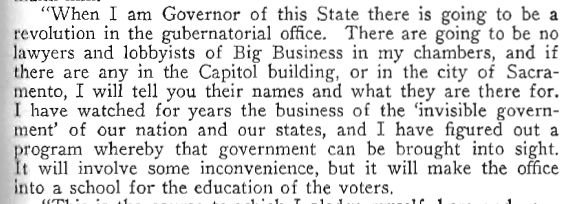Whitman’s 9/11 Lies Were Not The First Time She Lied About Significant Public Health Risks Of Exposure To Toxic Chemicals
After 15 Years and Thousands Dead & Dying, Whitman issues a self serving non-apology
Whitman’s prior lies about toxic mercury as NJ Governor should have disqualified and blocked confirmation as EPA Administrator
Senators Corzine, Torricelli & Committee Chair Boxer Supported Whitman, Helped Whitewash Record in NJ
Former NJ Governor Christie Whitman is in the news today on the 15th anniversary of 9/11 for what is shamelessly being portrayed as an “apology” and admission of errors in her repeated false statements that the air was safe to breath (see The Guardian who broke the story and The Bergen Record followup).
But Whitman pulls a Bill Clinton in parsing the words of both her so called “apology” and admission of error –
Note how Whitman unequivocally says she’s sorry that people got sick, but qualifies her own responsibility. She goes even further in The Record followup story and injects doubt about whether people even got sick and if it were EPA’s fault, qualifying and diminishing her own responsibility.
Paraphrasing Bill Clinton, I guess it all depends of the definition of “if”:
“I’m very sorry that people are sick,” she said. “I’m very sorry that people are dying and if the EPA and I in any way contributed to that, I’m sorry.
“If people died because we made a mistake, then of course I feel awful,” she said in an interview Saturday.
“If ” people died? Ask the family of Joe Picurro of Toms River, NJ, who died.
In both news stories, Whitman clings to the lie about the science and Whitman’s claims that her statements were based on EPA scientists’ recommendations:
“Everything that I did or said was based on the scientists, what their readings were telling them. I’m not going to secondguess the scientists because I’m not a scientist.”
That is another Whitman lie even the EPA Inspector General Report destroyed:
EPA’s early public statements following the collapse of the WTC towers reassured the public regarding the safety of the air outside the Ground Zero area. However, when EPA made a September 18 announcement that the air was “safe” to breathe, it did not have sufficient data and analyses to make such a blanket statement.
But I want to tell a tragic story about Whitman as Governor that foreshadowed her EPA 9/11 lies.
Had this scandal been taken seriously by the media and the US Senate at the time, there is no way Whitman would have been confirmed as EPA Administrator.
I know it well, having sacrificed my career at DEP over it and been forced out of DEP by Whitman and her political hacks as a whistleblower.
The Story that should have disqualified Whitman as EPA Administrator
Sworn testimony of a former NJ Department of Environmental Protection (DEP) Assistant Commissioner reveals that then NJ Governor Christie Whitman lied to the people of NJ about serious health risks – particularly to pregnant women, nursing mothers and their babies – of high concentrations of toxic methyl mercury in NJ freshwater fish.
The testimony names and implicates Whitman personally, by referring to hand written notes she wrote to DEP Commissioner Shinn in the margin of prior negative news stories about the risks of mercury, stories that specifically criticized the Governor for her false statements on the mercury issue.
The testimony reveals that the lies were part of a scheme cooked up by DEP and Whitman to discredit, inject false uncertainty into, and downplay the findings of a scientific study that found high levels of mercury in NJ freshwater fish.
The testimony names and shows that the scheme directly involved DEP Commissioner Shinn and his legal Counsel Mike Hogan – Hogan later was the Superior Court Judge who ruled in the highly controversial recent Christie DEP settlement of the Exxon $8 billion Natural Resource Damage case.
By lying about the reliability of this study, DEP could continue to issue permits for planned garbage incinerators and a coal plant in south jersey – major sources of mercury – and avoid economic impacts to the recreational and commercial fishing and food industries, as well as DEP’s own fishing license revenues.
Whitman’s lies about mercury presaged her 9/11 lies and should have disqualified her from her subsequent EPA post in the Bush Administration.
But at that hearing, Whitman was introduced and supported by NJ’s Democratic Senators Torricelli and Corzine, enabling her record as NJ Governor to be whitewashed and not seriously probed by the Senate Committee.
The Whitman DEP appointees – Commissioner Shinn, Legal Counsel Hogan and Chief of Staff Mark Smith – then conspired to retaliate against the whistleblower who exposed this scheme. All are named and specifically implicated in the testimony.
But before we tell the complex story and provide excerpts and links to the sworn testimony, lets first lay the relevant scientific background – the boldface emphases are mine. Keep the boldface text in mind when you read the sworn testimony.
Mercury is highly toxic
Mercury bioaccumulates and biomagnifies up the food chain and is a more potent neurotoxin than lead, particularly for prenatal exposure (see this ATSDR toxicological profile for health effects).
Dietary intake is the most important source of nonoccupational exposure to mercury, with fish and other seafood products being the dominant source of mercury in the diet. Most of the mercury consumed in fish or other seafood is the highly absorbable methylmercury form. […]
Members of the general public with potentially high exposures include individuals who live in proximity to … municipal or medical incinerators, or coal-fired power plants. Other populations at risk of exposure include recreational and subsistence fishers who routinely consume meals of fish that may be contaminated; subsistence … and pregnant women and nursing mothers (including their developing fetuses and breast-fed infants) who are exposed to mercury from dietary, medical, or occupational sources,
Methylmercury constitutes over 99% of the total mercury detected in fish muscle tissue, with no detection of inorganic or dimethylmercury (Grieb et al. 1990; Bloom 1992). (Source: see ATSDR Potential For Human Exposure)
Scientists are especially concerned about impacts on children and developing fetus: (see Section 1.6 of ATSDR Public Health Statement)
Methylmercury is the form of mercury most commonly associated with a risk for developmental effects. Exposure can come from foods contaminated with mercury on the surface (for example, from seed grain treated with methylmercury to kill fungus) or from foods that contain toxic levels of methylmercury (as in some fish, wild game, and marine mammals). Mothers who are exposed to methylmercury and breast-feed their infant may also expose the child through the milk. The effects on the infant may be subtle or more pronounced, depending on the amount to which the fetus or young child was exposed. In cases in which the exposure was relatively small, some effects might not be apparent, such as small decreases in IQ or effects on the brain that may only be determined by the use of very sensitive neuropsychological testing. In instances in which the exposure is great, the effects may be more serious. In some such cases of mercury exposure involving serious exposure to the developing fetus, the effects are delayed. In such cases, the infant may be born apparently normal, but later show effects that may range from the infant being slower to reach developmental milestones, such as the age of first walking and talking, to more severe effects including brain damage with mental retardation, incoordination, and inability to move. Other severe effects observed in children whose mothers were exposed to very toxic levels of mercury during pregnancy include eventual blindness, involuntary muscle contractions and seizures, muscle weakness, and inability to speak. It is important to remember, however, that the severity of these effects depends upon the level of mercury exposure and the length of exposure. The very severe effects just mentioned were reported in large-scale poisoning instances in which pregnant and nursing women were exposed to extremely high levels of methylmercury in contaminated grain used to make bread (in Iraq) or seafood (in Japan) sold to the general population.
Researchers are currently studying the potential for less serious developmental effects, including effects on a child’s behavior and ability to learn, think, and solve problems that may result from eating lower levels of methylmercury in foods.A main source of exposure to methylmercury for the pregnant woman and the young child is from eating fish.
Highlights of the sworn testimony
Come back for part 2 of this post tomorrow, where we tell the NJ mercury coverup story, excerpt the sworn testimony, and provide links to all the documents so you can read the whole story.





